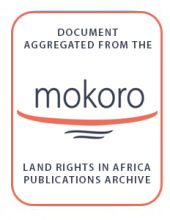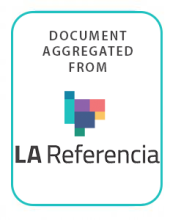Land Library
Bienvenido a la biblioteca de Land Portal. Explora nuestra amplia colección de recursos de acceso abierto (más de 74.000), que incluye informes, artículos de revistas científicas, trabajos de investigación, publicaciones revisadas por pares, documentos jurídicos, vídeos y mucho más.
/ library resources
Showing items 118 through 126 of 1712.There are many misconceptions about farming in southern Africa;and one of the most insidious is the notion of ‘viability’. A narrow economistic version has predominated that is based on a normative vision of farming based on full-time;large-scale commercial production.
The dynamics of urbanization and growth of the Latin American city is due to different geographical, economic, and social factors.
Pastoralists in Isiolo county in northern Kenya feel under siege;with their way of life under threat.
Money from pension funds has fuelled the financial sector’s massive move into farmland investing over the past decade. The number of pension funds involved in farmland investment and the amount of money they are deploying into it is increasing;under the radar.
Low productivity cattle ranching, with its linkages to rural poverty, deforestation and greenhouse gas (GHG) emissions, remains one of the largest sustainability challenges in Brazil and has impacts worldwide.
Determina el cambio en el uso de la tierra y la fragmentación de las zonas boscosas en el Corredor Biológico Lago Arenal Tenorio (CBLAT), en el periodo 2000 – 2017. Se utilizó imágenes del programa Landsat, a las cuales se les aplicó corrección radiométrica y atmosférica.
Universidad Nacional Agraria La Molina. Escuela de Posgrado. Maestría en Bosques y Gestión de Recursos Forestales
El “huarango” (Prosopis pallida), es una especie vegetal que crece en las partes más secas a lo largo de la Costa del Pacífico y algunos sectores de la región andina del Perú, soportando un alto grado la deforestación debido a sus múltiples usos como alimento, forraje, abono, madera, medicinal, e
In recent decades;many countries in sub-Saharan Africa have pursued national water permit systems;derived from the colonial era and reinforced by “global best practice.” These systems have proved logistically impossible to manage and have worsened inequality in water access.


